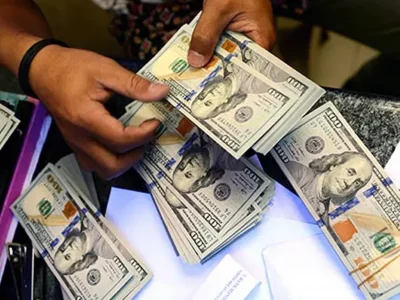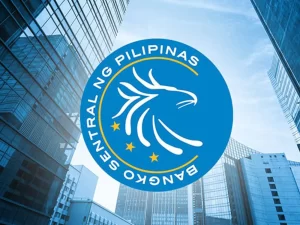
Finance Secretary Ralph G. Recto has urged members of Congress to adhere to the refined Medium-Term Fiscal Program (MTFP) in the 2026 budget deliberations and ensure that next year’s General Appropriations Act (GAA) works as hard as the people who fund it––the taxpayers.
“Let us operate within the parameters of the Medium-Term Fiscal Program that reduces our deficit and debt gradually, creates jobs, increases income, and decreases poverty,” he said during the Development Budget Coordination Committee (DBCC) Briefing for the House Committee on Appropriations on the Fiscal Year 2026 National Budget on August 18, 2025.
The Medium-Term Fiscal Framework (MTFF), which was first crafted in 2022, was recalibrated by Secretary Recto in 2024 to keep goals attainable, realistic, adaptive to external challenges, and supportive of sustainable growth.
This is to take into consideration the country’s recovery from the pandemic while navigating global uncertainties such as the Russia-Ukraine war, the Israel-Gaza war, the Israel-Iran war, and trade wars, among others.
The refined Framework now charts a realistic path to gradually reduce the country’s deficit and debt, while creating more jobs, raising incomes, and lifting millions of Filipinos out of poverty.
“And under this, we have ensured that every peso collected or borrowed will be stretched to deliver the biggest bang per buck for the Filipino people,” Secretary Recto said.
Revenues on a strong upward trend
The Finance Chief reported that the government is on track to meet its fiscal targets, with revenue collections growing by double digits for the last three years at an average of 13.8% annually. Tax collections, on the other hand, have consistently expanded at an average of 11.5% annually.
In fact, the government has achieved a revenue effort of 16.7% in 2024––the highest in the last 27 years.
From 2025 to 2028, tax revenues are projected to grow 10.2% annually, pushing total revenues to hit nearly PHP 6 trillion by the end of the President’s term. By 2030, total revenues will breach the PHP 7 trillion mark.
Revenue collections will be bolstered by the recently enacted reforms, such as the VAT on Digital Services and the Capital Markets Efficiency Promotion Act (CMEPA), as well as the soon-to-be-enacted Rationalization of the Mining Fiscal Regime Act and the proposed General Tax Amnesty.
The DOF is also maximizing non-tax revenues by increasing the Government-Owned or -Controlled Corporation’s (GOCCs) dividend remittances and privatizing more idle government assets to raise more resources without imposing new taxes.
Furthermore, the Bureau of Internal Revenue (BIR) and the Bureau of Customs (BOC) are doubling down their efforts in enhancing tax administration through digitalization, strict enforcement, and plugging of tax leakages.
Deficit narrowing, spending focused on key priorities
With higher government revenue collections and improved expenditure management, the fiscal deficit dropped from the pandemic high of 8.6% in 2021 to 5.5% in 2025 and down to about 4% by 2028. It will further drop to around 3% by 2030.
The fiscal deficit remains manageable for the first half of the year at 5.7%. The government targets a deficit of 5.5% for the full-year 2025.
Secretary Recto strongly cautioned against wasteful expenditures and overappropriation, emphasizing that the DOF stands by two crucial principles: Set revenue targets carefully and spend taxes well to encourage tax compliance.
“People are naturally resistant to taxes. But their tax obedience can be won if they will see how the taxes they paid are spent for the right things, at the right price, by the right agency, at the right time. And that is exactly what this administration is doing—putting every peso where it matters most,” he said.
The Finance Chief emphasized that the Marcos, Jr. administration’s key priorities are education, health, agriculture, infrastructure, and digital connectivity, which have high multiplier effects on the economy, creating more jobs, raising incomes, and decreasing poverty.
Debt remains sustainable and manageable
Despite inheriting PHP 12.8 trillion in pandemic debt from the past administration, Secretary Recto reported that the Marcos, Jr. administration has already made improvements in its debt metrics.
The majority of the borrowings are domestic, long-term, and at fixed interest rates. The government will continue to adopt an 80:20 borrowing mix in favor of local sources to take advantage of domestic liquidity and mitigate foreign exchange risks.
The country’s national debt is also relatively lower compared to major Asian economies.
“Every peso we borrow is invested in productive projects that deliver real benefits to Filipinos,” he said.
“We will make sure that the economy will continue to outgrow the country’s debt. This will ensure that we have the ability to pay for our obligations,” he added.
The Finance Chief stressed that if the government strictly adheres to its refined fiscal program and maintains disciplined and efficient spending, the size of the Philippine economy is projected to reach PHP 42.6 trillion by 2030, while keeping debt at PHP 24.7 trillion, equivalent to 58% of GDP.
He assured the public that it has every reason to be confident in the government’s prudent debt management, backed by a clear financing strategy and reaffirmed by recent credit rating and outlook upgrades from global rating agencies.
Impact of policy decisions already being felt
Inflation slowed to just 0.9% in July, following the government’s whole-of-government approach to ease food prices.
The Philippine economy has been growing at almost twice the pace of the global economy, averaging 5.9% since President Marcos, Jr. took office in 2022.
Since 2022, the administration has created roughly 6 million jobs, the highest compared to the past administrations. As of June 2025, a record 52.4 million Filipinos are participating in the labor force, with both unemployment and underemployment rates continuing to drop.
Poverty incidence has likewise dropped to 15.5% in 2023, lifting 2.5 million Filipinos out of poverty. By 2028, the administration aims to free eight million more Filipinos from poverty, bringing the rate down to single digits at 9%.
“This is the be-all and end-all of all our efforts. As this is the definitive indicator that our growth has translated into real improvements in the lives of Filipinos through more and better jobs, higher levels of education, and healthier lives,” Secretary Recto said.



